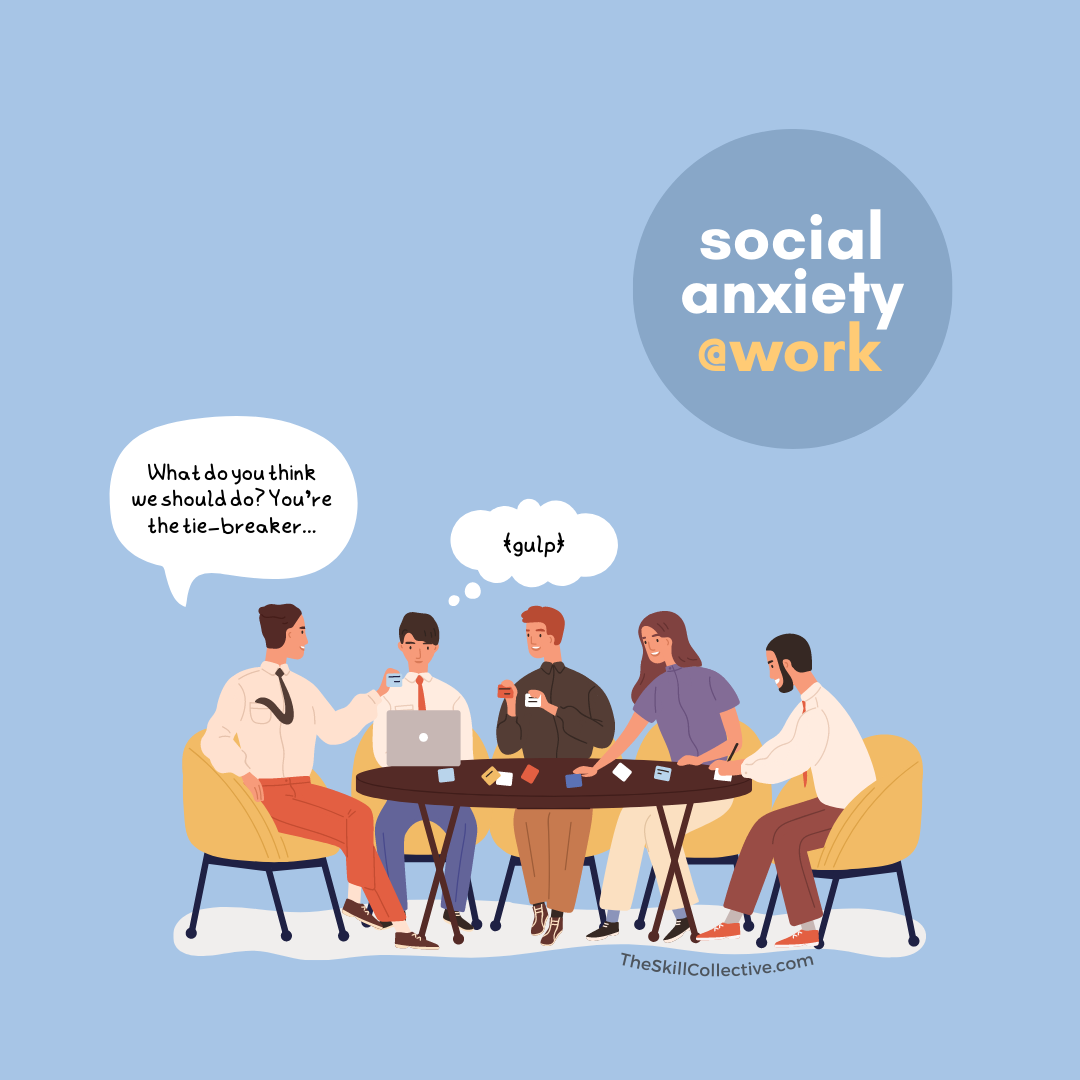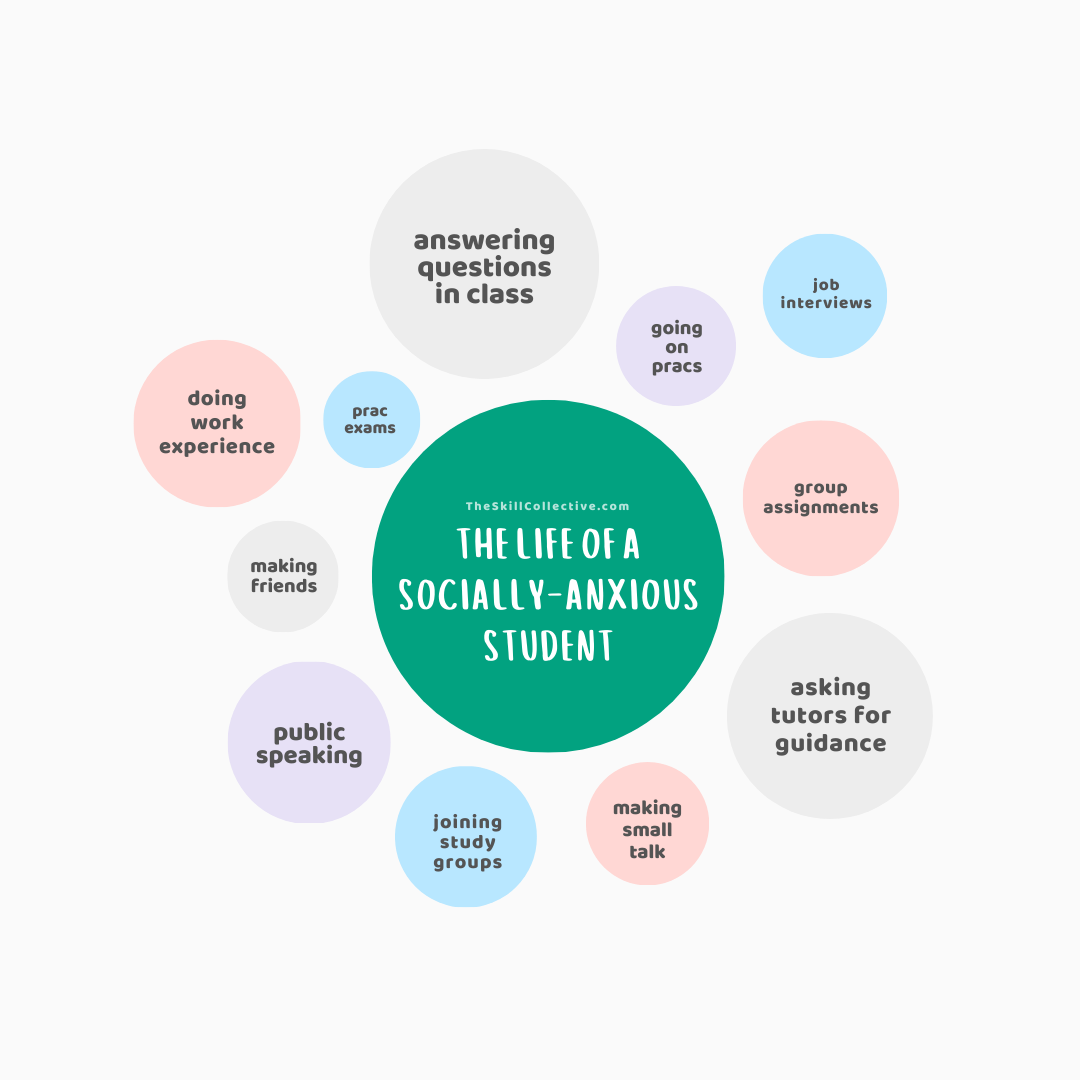STEPPING UP AT WORK: TIPS FOR OVERCOMING PUBLIC SPEAKING ANXIETY TO HELP YOUR CAREER
By Giulia Villa
What holds you back at work? Over your working life, there will inevitably be barriers and missed opportunities. At times, these barriers will be external – the work environment may not be suitable, or the workload unrealistic. At times, however, these barriers are internal – your mindset, skills, and habits get in the way of stepping up to the next level at work. Some examples of these include difficulties with being assertive at work and setting boundaries, managing procrastination, managing a team, or managing burnout. Another common internal barrier we often see – that touches so many areas of working life – is that of public speaking. In fact, public speaking is seen as an important skill in the workplace. However, a fear of public speaking – or glossophobia – is widespread, with estimates ranging from upwards of 20% to a whopping 75% of populations. How far-reaching is the impact of public speaking anxiety at work? Let’s look at some examples:
Ella, a high-achieving teacher, has been asked by the Department of Education to train a cohort of early-career teachers. In spite of her passion for educating the next generation of teachers, Ella is considering turning down the role because it involves public speaking – training large groups of teachers, giving regular progress updates to senior staff, and speaking at Department of Education conferences. At present, Ella copes with public speaking anxiety by preparing for hours to reduce the likelihood of making mistakes and ease her anxiety. She knows given the sheer number of sessions she will be delivering, it will not be possible to overprepare for each session whilst maintaining her usual teaching duties without experiencing burnout. Ella could turn down the position and keep her workload and anxiety more manageable, however she knows she will feel trapped remaining at her current level, without opportunity to progress.
Oliver was recently promoted to management level due to his excellent technical skills as an engineer. However, while he excelled at research, problem solving, and producing written deliverables, the director of his team has recently expressed concern at Oliver’s performance in his new role. Notably, Oliver has cancelled several meetings, preferring instead to communicate via email to avoid being put on the spot and to have time to plan what to say. Rather than delegate project work to the team and Oliver being the ‘face’ of the project, Oliver carries out the technical work himself and assigns more junior staff to present project updates and lead team calls. After a conversation with his director, understands he will struggle to progress in this workplace without tackling his avoidance of public speaking.
The situations faced by Ella and Oliver are just a few examples of how typically high-performing individuals may be held back by their fear or avoidance of public speaking in their workplace. Let’s break down public speaking anxiety a little further. In the DSM-5-TR (2022) public speaking anxiety is a specific subset of social anxiety. Key features of this type of anxiety include:
A fear of acting in a way or showing anxiety symptoms (e.g., blushing, trembling hands, excessive sweating) that will be embarrassing or lead others to negatively judge the speaker or the content of the presentation.
An avoidance of public speaking situations, or enduring these situations with fear and anxiety. Avoidance might crop up as frequent sick days, low involvement in work meetings, joining calls at the latest possible moment, or agreeing with everyone to avoid conflict.
The fear provoked by public speaking situations and the possibility of being judged negatively by others is intense and significantly impacts one’s functioning in their work and/or social life.
HOW PUBLIC SPEAKING anxiety HOLDS YOU BACK AT WORK
As we’ve seen in Ella and Oliver’s examples, there are many situations at work in which public speaking may have a negative impact and hold you back from succeeding in your career. Let’s take a closer look at some of these scenarios.
NETWORKING: A MINEFIELD FOR SOCIAL ANXIETY
Networking is often a highly dreaded activity for those with public speaking anxiety – in effect it’s being ‘on show’, making small talk in a work context, often in small groups. However, networking has become an essential component of success in our hyper-connected society – did you know over half of jobs are never publicly advertised? In 2016, LinkedIn reported that 70% of professionals starting a new role already had an existing connection at their company. The takeaway? You’ve got to meet groups of people and make connections so as to be at the forefront of people’s minds when upcoming jobs arise. Unfortunately, nerves about being on show in public can make the ever-important act of networking a nightmare and may lead you to connect online, to avoid unfamiliar people, or even to undersell yourself during in-person networking events. In any case, anxiety stops you from making the most of an important networking opportunity.
WORK MEETINGS
Speaking up in front of others – whether it’s the weekly check in around the meeting table, or your turn to give an update on a project – can feel extremely daunting to someone who dislikes public speaking. You may focus on all eyes being on you, and have spent the night before thinking about how exactly to present what you need to but minimise your time ‘on display’.
Post-pandemic flexible work arrangements may mean that many meetings now take place over video calls. For some, these online meetings may be even more anxiety-inducing than face-to-face meetings. You may feel more aware of being watched and of being negatively judged by others, and thus experience more pressure to perform well. Social anxiety can also lead to a greater focus on scrutinising one’s own onscreen image, thus amplifying self-consciousness. Additionally, brief moments of silence that feel natural in person may become accentuated and feel awkward in a video call.
DELIVERING PRESENTATIONS AND SALES PITCHES
If the idea of delivering a presentation to a client or even your own colleagues is enough to make your heartrate quicken, you may have developed ways to deal with this seemingly inevitable anxiety. For example, you may spend hours overpreparing like Ella. Or you may be so focused on getting the presentation over and done with, you don’t have much energy to put into designing the presentation itself. Then, of course, there is question time – a period where you don’t know what questions will be thrown at you.
A good presentation in a work setting boils down to how you design your presentation and the speaking techniques that you employ to deliver your message. Unfortunately, it can be incredibly challenging for someone with anxiety to simultaneously manage uncomfortable physical symptoms, quiet down unhelpful self-talk, remember the content, and remember how to deliver it, and have the presence of mind to adapt the presentation to the audience.
Public speaking anxiety might also affect your presentation by impacting:
Speech rate
Tone of voice
Posture and body language
Use of filler words
Use of visual materials
Engagement with the audience
Public speaking anxiety may hold you back from being able to recognise what style is most appropriate for your audience and situation, and also on helping you to handle unknown questions (as part of question time). This is where we can help – keep reading to find out how our team of counsellors and psychologists can help you manage anxiety and become a more confident public speaker in your workplace. We’ve helped students manage anxiety for their university presentations, helped doctors to present confidently in their clinical exams, helped teachers to present to peers and parents, and helped professionals develop networking and sales pitch skills. We enjoy helping people grow their skill set and their confidence.
tips for managing PUBLIC SPEAKING ANXIETY
Try the following tips for managing social anxiety at work:
TIP 1: LEARN TRIGGERS AND HABITS THAT MAINTAIN PUBLIC SPEAKING ANXIETY
What exactly is it about public speaking that causes you anxiety? Perhaps it’s the idea of drawing attention to yourself, or perhaps you’re worried about visibly freezing or sweating. Having a clear grasp on what causes and maintains your anxiety goes long way in developing a targeted action plan to reduce your fears.
TIP 2: DISMANTLE UNHELPFUL SELF-TALK THAT FUELS YOUR FEAR OF PUBLIC SPEAKING
Negative self-talk is a common thread underpinning public speaking anxiety. The ‘stories’ you tell yourself can increase your anxiety. For example, Ella might notice a senior staff member check their phone during one of her presentations. Self-talk along the lines of “I’m not doing enough to hold their attention, they can tell I’m inexperienced and underprepared” is likely to make Ella more nervous, possibly increasing her likelihood of making mistakes.
On the flipside, self-talk can also be a helpful tool to reduce anxiety and help you to feel more comfortable during your presentation. A more helpful thought for Ella in the above situation could therefore be, “They may be checking their phone as they could be expecting a call”. In this case, Ella would feel less nervous and better able to continue with her presentation as planned.
TIP 3: FINE-TUNE YOUR PRESENTATION STYLE
We all have a different idea of what it means to be a good public speaker. Presenter ‘personas’ can vary widely across people, furthermore different types of speeches require different styles and components – presenting a sales pitch marketing muesli requires a different approach to delivering a lecture on research developments in biotech. By clarifying your goal – for example, who is your target audience (Formal? Informal?), what are you trying to achieve (Sell a product? Disseminate information?) – you have a clearer idea of how to shape your message and design an effective presentation. By having confidence in your materials and your messaging, you will also feel more comfortable in delivering!
TIP 4: GET EXPERIMENTING
Running ‘experiments’ on yourself is a great way to challenge pesky thoughts and fears that are standing in the way of your career success. Thoughts aren’t exactly the most reliable source of information when it comes to public speaking – fears that ‘everyone will laugh at me’ or ‘if I stumble over my words I’ll get fired’ can disproportionately dial up your anxiety to the point of interfering with your presentation.
In order to move past your fears try setting up small behavioural experiments to test how true these predictions are. The next time you are asked to speak in front of others, perhaps intentionally slip in a small mistake. Carefully notice the reaction of your audience – does it fit with your predictions? This testing can help you to determine whether the evidence fits with what you’ve been telling yourself.
If you’re interested in a tailored approach to dismantling your public speaking anxiety at work, check out our Speaking Volumes course. Over six weeks (allowing for time to practice your new skills in between sessions), you will work individually with one of our clinicians through an evidence-based, practical approach, to reduce public speaking anxiety and provide you with the skills and tools you need to succeed in the workplace.
Speaking Volumes, our 6-week course to help with public speaking anxiety covering how to improve your presentations skills as well as anxiety management skills (cognitive restructuring, exposure therapy). This course is based on CBT and social skills training.
REFERENCES
Aderka, I.M., Hofmann, S.G., Nickerson, A., Hermesh, H., Gilboa-Schechtman, E., & Marom, S. (2012). Functional impairment in social anxiety disorder. Jounral of Anxiety Disorders, 26, 393-400. Doi: 10.1016/j.janxdis.2012.01.003
American Psychiatric Association. (2022). Diagnostic and statistical manual of mental disorders (5th ed., text revision). American Psychiatric Association Publishing.
Blöte, A. W., Kint, M. J. W., Miers, A. C., & Westenberg, P. M. (2009). The relation between public speaking anxiety and social anxiety: A review. Journal of Anxiety Disorders, 23(3), 305–313. https://doi.org/10.1016/j.janxdis.2008.11.007
Ebrahimi, O. V., Pallesen, S., Kenter, R. M. F., & Nordgreen, T. (2019). Psychological Interventions for the Fear of Public Speaking: A Meta-Analysis. Frontiers in psychology, 10, 488. https://doi.org/10.3389/fpsyg.2019.00488
Martin-Lynch, P., Correia, H., & Cunningham, C. (2016). Public speaking anxiety: The S.A.D. implications for students, transition, achievement, success and retention. In: Students Transitions Achievement Retention & Success (STARS) Conference 2016, 29 June - 2 July 2016, Perth, Western Australia. https://researchrepository.murdoch.edu.au/id/eprint/39766/1/SAD.pdf
Vriends, N., Meral, Y., Bargas-Avila, J.A., Stadler, C., & Bogels, S.M. (2017). How do I look? Self-focused attention during a video chat of women with social anxiety (disorder). Behaviour Research and Therapy, 92, 77-86. https://doi.org/10.1016/j.brat.2017.02.008.













Ever feel like a fraud at work? Stuck in a negative mindset? You’re not alone. Find out how imposter syndrome holds you back you at work and learn tips to better manage.